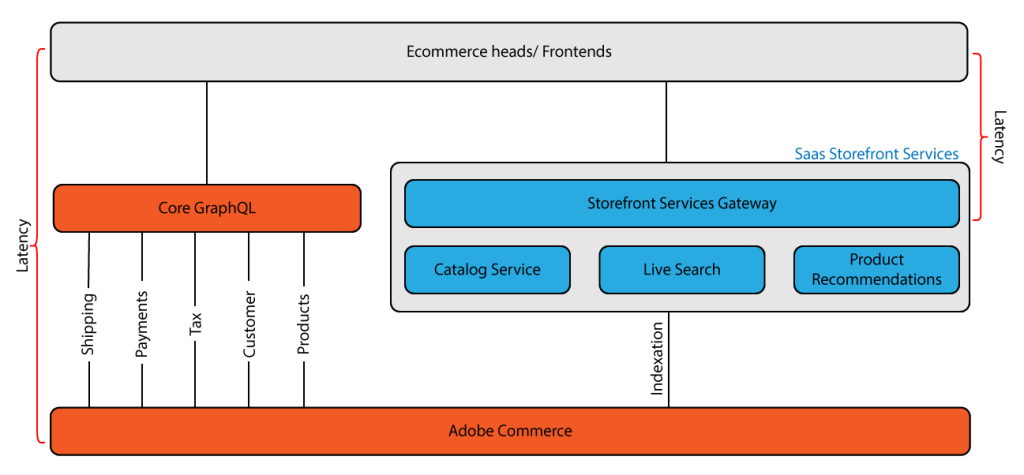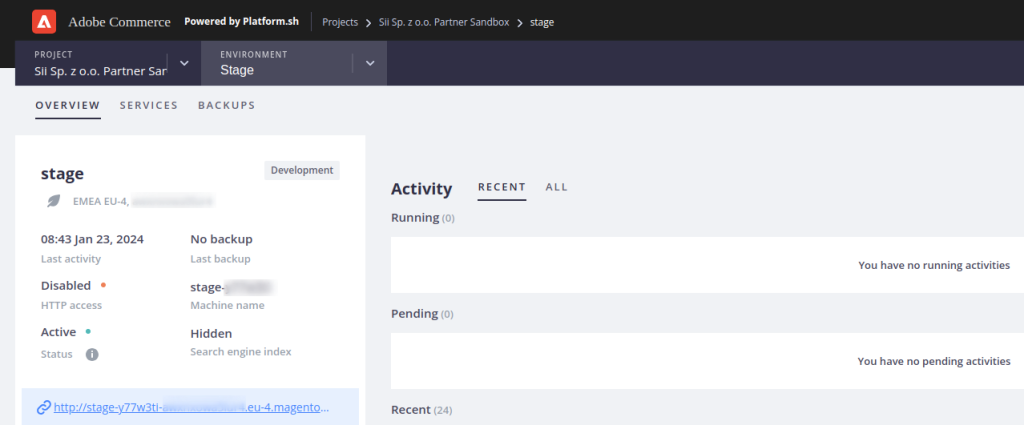Choosing the right e-commerce platform can be very important when deciding to conduct online business. Today, I will discuss two popular e-commerce solutions: Adobe Commerce and Magento. Both may seem similar at first glance but differ in several key and minor aspects. They can influence your decision.
In this article, I will explain the differences between these platforms to support the decision-making process and help you choose the optimal solution for your business.
What are Adobe Commerce and Magento?
Let’s start with the basics. Adobe Commerce is a paid platform version offering full support and advanced features designed for medium and large enterprises. The prices of Adobe Commerce depend on the sales volume and features used. On the other hand, Magento is the free counterpart. Magento Open Source primarily aims at small and medium-sized businesses looking for flexibility on a limited budget.
Common features – what connects Adobe Commerce and Magento?
Both platforms have many similarities that make them attractive to sellers worldwide. They include:
- Multi-market sales – You can reach customers worldwide by selling in different currencies and languages.
- Managing inventory from multiple sources allows for consolidating multiple warehouses in one place, which results in a wider sales reach.
- Mobile device support –customers can shop from anywhere using their phones or tablets (Headless architecture support).
- Mobile device support –customers can shop from anywhere using their phones or tablets (Headless architecture support).
- Modern payment methods will allow for safe and convenient shopping with home delivery or to a parcel locker.
- Advanced marketing and SEO tools – to increase your store’s visibility and encourage more customers to make purchases.
- Advanced reports will show you better and worse sales days and allow you to analyze data for further sales strategies.
- Easy-to-use CMS editor will allow you to add blog subpages and inform customers about upcoming promotions.
- Module installer with a graphical interface will enable the installation of additional plugins for your store with just a few clicks.
What distinguishes Adobe Commerce?
Adobe Commerce meets the expectations of larger enterprises by offering:
- Flexibility and scalability: The ability to easily move the store to the cloud allows quick adaptation to growing business needs.
- Technical support: Access to professional technical support can be invaluable when facing issues during sudden increases in website traffic and server overload.
- Security: Provides additional layers of security through automatic security updates and CDN protection against DDoS attacks to protect your customers’ data.
- Observability: Combines data from multiple sources to help better manage your store’s performance. It is also a tool for visualizing application log data combined with data from the NewRelic platform on one panel with an easy-to-understand navigation dashboard.
Adobe Commerce – standard features
Adobe Commerce is a solution that opens up many new possibilities compared to Magento Open Source. Adobe Commerce can operate on-premise and in PaaS versions (AWS, Azure). Adobe Commerce also provides additional features as standard; here are the most important ones:
- B2B Company – allows for managing company accounts with contact information and enables logging into the user panel with permissions.
- Events – will allow you to configure notifications on a selected subpage for your customers (category, product) in the form of a banner reminding them of a specific event.
- Catalog Service – will provide your customers with unique shopping experiences by using even faster product catalog retrieval. There are two approaches to data transmission here:
- GraphQL – basic covering the scope of queries and mutations, and a service system that is optimized for product-related queries.

- Live Search – is one of the key features in Adobe Commerce, which will provide entirely new experiences and even better search experiences for customers. It offers faster, more intuitive, and accurate search capabilities. Adobe Sensei and Live Search utilize artificial intelligence and machine learning algorithms to analyze visitor data and match it with the product catalog. All of this translates into unique shopping experiences for your customers.
- Product Recommendations will encourage customers to purchase highly rated products. They are supported by Adobe Sensei, a marketing tool designed to enhance customer engagement in purchasing. This feature analyzes visitor data and integrates it with the product catalog by utilizing artificial intelligence and machine learning.
- Shared Catalogs – will introduce lower prices for your customers and support corporate account management for e-commerce stores. As a result, it will enable the creation of custom prices for products for different companies on one or multiple websites, directly impacting sales and customer satisfaction.
- Quick Order – facilitates the order placement process for customers, making it possible to place an order in just a few clicks.
- Negotiable Quotes – introduces a dynamic element to B2B transactions, allowing for price negotiations between buying and selling companies and an interactive negotiation process.
- Purchase Order Approvals – allows creating, editing, and deleting orders for corporate accounts.
- Requisition Lists – helps customers who frequently purchase the same products. This feature allows customers to create and manage multiple lists tailored to specific needs or preferences, streamlining their purchasing process.
Adobe Commerce Cloud (PaaS) provides security and monitoring compared to an on-premise solution. In the Adobe Commerce Cloud version, we also have access to CI/CD processes, which are very important if we have a whole team dedicated to developing and maintaining the project.

To ensure the highest level of security, patches released by Adobe should be installed regularly for both versions so that the system is up to date and protects your customers’ data.
Pros and cons of both solutions
Adobe Commerce
When choosing Adobe Commerce, it is worth noting its advantages and disadvantages.
Pros:
- The ability to use the Cloud (PaaS) version provides greater capabilities and enhances security.
- Security and support – offer peace of mind with professional support and strong security measures.
- Access to advanced features – immediately receive tools that help increase engagement and sales.
Cons:
- Licensing fees – licensing fees can be a barrier for smaller companies.
Magento
When choosing Magento, it is worth analyzing the advantages and disadvantages of the solution.
Pros:
- No licensing fees – ideal for those starting with a limited budget.
- Flexibility – the ability to customize the platform to meet your needs.
Cons:
- B2B – lack of new features and regular updates.
- Technical support – lack of dedicated support can be challenging.
- Security – smaller companies may need additional resources to ensure the same level of security as with Adobe Commerce.
Summary
The decision between Adobe Commerce and Magento depends on various factors, such as the size of your company, budget, and required features.
For larger companies with greater business needs characterized by many markets or a large product catalog, Adobe Commerce offers rich features and support to accelerate their growth from medium-sized businesses to large enterprises. Magento Open Source offers flexibility and capabilities to help them in this regard. It is aimed at medium-sized enterprises that value flexibility and the ability to change platforms and hosting.
Ultimately, the choice is up to you and your unique business needs. I hope this guide has helped you understand the key differences and make the decision easier.
***
If you are interested in e-commerce, be sure to take a look at other articles by our specialists.
















Leave a comment